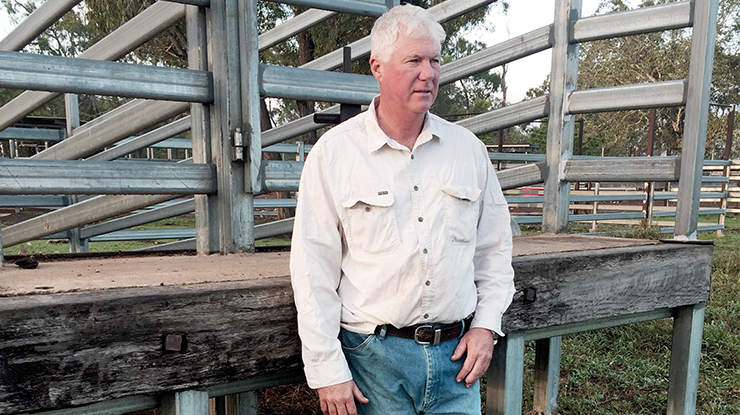 North Queensland beef producer Ian MacGibbon uses seasonal forecasts to manage risk.
North Queensland beef producer Ian MacGibbon uses seasonal forecasts to manage risk.
Managing costs in an uncertain climate
There are long odds on keeping cattle productive when the northern wet season fails to deliver, but Queensland beef producer Ian MacGibbon has a strategy to meet the challenge head on.
“You don’t make money speculating on rainfall – managing risk by managing costs is vital,” he said.
His Fitzroy grazing enterprise includes coastal land and river country, which present different seasonal challenges.
Throughout the year, Ian carefully monitors seasonal rainfall and adapts his business with a focus on maintaining profitability.
Strategies include:
- managing stock numbers to protect ground cover
- increasing the focus on rotational grazing to improve grass composition
- adjusting joining time to maximise breeder condition.
Productive pastures
When the 2018–19 wet season yielded only 50–60% of the usual rainfall, Ian made the decision to reduce stock numbers substantially.
He sold more than 900 head above his normal annual sales – this maintained grass so he didn’t have to feed cattle through winter.
Protecting ground cover also allowed him to take full advantage of any water captured.
Ian started experimenting with rotational grazing around 10 years ago, dividing two 1,200ha paddocks into quarters to spell over the wet season. This improved grass composition and regenerated native grasses and stylos, which perform better in dry conditions.
In the past few years, Ian has taken it a step further and cut his paddock size again, dividing the 1,200ha paddocks into six paddocks of around 200–250ha. One is grazed while the other five are spelled.
Monitoring rainfall has also motivated Ian to push joining back a month to 1 December.
“Cattle condition can deteriorate over the winter, so we need to wean early and maximise condition before joining.”
This matches the local ‘green date’ of 1 December for St Lawrence – the date locals expect 50mm of rainfall within a three‑day period.
Ian’s approach to dealing with climate variability is about maintaining income while reducing risk, such as running a high‑content Brahman herd which is well suited to the environment.
He has further spread risk by diversifying into sugar cane, purchasing a 280ha irrigated property at Millaroo in the Burdekin region.
Tools
Ian compares his 12‑month rolling rainfall total from his own records to local averages to plan his stocking rates.
In the past two years, he’s only had five‑eighths of the average rainfall, which means he’s only willing to hold five‑eighths of his potential cattle numbers.
He also uses the CliMate app to keep track of where he is, compared to seasonal averages, and the Bureau of Meteorology short‑term weather forecasts to plan planting, spraying and irrigating.
The next project on the agenda is to improve grass‑budgeting techniques, to help plan nutritional requirements from the end of April through to the start of the wet season.
Lessons learned
- Manage risk by managing costs.
- Monitor seasonal outlooks and adapt management accordingly.
- Manage pastures so they respond to rain events.



